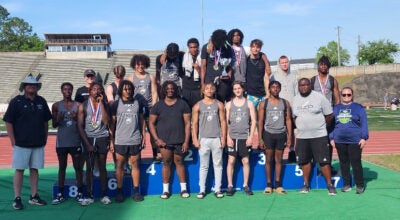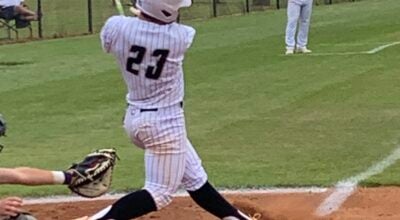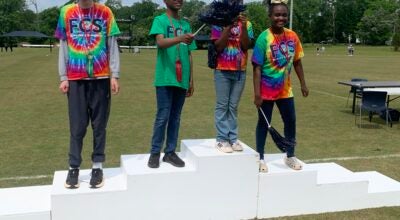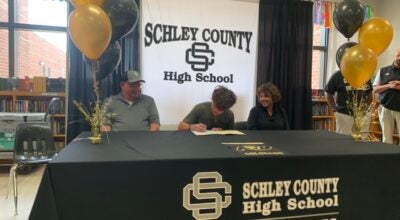Future of Hank Aaron statue unclear as Braves plan for move
Published 4:00 pm Thursday, February 12, 2015
ATLANTA (AP) — It was probably the world’s only “pay-as-you-go statue,” Bob Hope — a local marketing guru, not the famous comedian — likes to joke. Eight years after Braves right-fielder Hank Aaron shattered Babe Ruth’s home-run record in 1974, Hope decided to form a nonprofit group dedicated to erecting a monument to the baseball legend. As a symbolic gesture of gratitude, the nonprofit deemed, it should be paid for by Aaron’s fans.
Problem was, Hope now says, “I don’t think I realized how many fans it took to raise the money.” Organizers cobbled together checks and coins and managed to get The Atlanta Journal-Constitution to urge and match donations. In the end, a larger-than-life statue was erected at the Atlanta Fulton County Stadium in 1982, and later moved to Turner Field.
So, now that the Braves are headed to the suburbs, what should become of this gesture of gratitude, paid for largely by Atlantans? Specifically, who owns it, and where will it go when the team leaves town?
Well, that all depends on whom you ask.
Ask the Braves, and the answer is clear: They do. And it’s going to SunTrust Park when the team does in 2017.
But talk to the Atlanta Fulton County Recreation Authority, which oversees Turner Field, and the ownership question becomes a bit murkier.
Hope, who worked in the Braves’ marketing department when Aaron broke Ruth’s record, believes the statue was donated to the AFCRA when it was dedicated. The folks there say they are in the early stages of itemizing the ball field’s monuments and plan to look into the issue later this year.
As far as those interviewed for this story know, there’s little or no paperwork that spells out ownership of Aaron’s bronze statue. Without a clear answer, many are looking to Aaron for guidance on whether the statue should stay or go.
In an interview this week, the baseball great says he’s conflicted.
“On one hand, I think the statue should be wherever the baseball park is, wherever the Braves are playing,” Aaron says. “After all, I played with the Braves.”
But on the other, he continues, the statue was paid for by fans — not the team. “So if you had to think about it, it all belongs to Atlanta, to the people of Atlanta.”
Ultimately, 527 fans gave to the effort, Hope says, with an average contribution of $200. Some big names, including legendary former University of Georgia football coach Vince Dooley and former U.S. Senator Sam Nunn, each gave $5,000. As Hope recalls, the nonprofit raised between $120,000 and $130,000.
Along with Aaron, the group chose Colorado-based artist Ed Dwight, then a relatively unknown sculptor, to create the piece.
Dwight said it would cost as much as three times that amount to commission a similar piece today. Back then, he was just beginning his career as an artist. He had one major sculpture under his belt when hired for the job, and just months to finish what normally takes a year.
The artist laughs when recalling the time Aaron, Hope and others flew out to his studio to view a clay prototype of the statue. Temperatures were unseasonably warm in Colorado that week. Two days before their visit, the clay sculpture began to melt.
“His whole head hit the ground floor and was smashed up like a Halloween mask. And his butt totally fell off. Four hundred pounds on the floor,” Dwight recalls.
He tried to fix it and explain what happened, he says: “But as soon as they saw this thing, they thought: ‘Oh my God, we picked the wrong guy.'”
By the day the bronze version was officially unveiled in Atlanta, those fears were gone. Dwight portrayed Aaron at home plate, with a gaze toward the outfield after a mighty swing.
“He did an excellent job of imitating how I looked,” Aaron says.
Dwight, who has remained friends with Aaron over the decades, says that he wants for the statue whatever Aaron wants.
But he has his own thoughts, too.
Sure, he’s aware of the chatter, the tension over taking the statue of a famous black athlete out of a largely black community and transferring to a predominantly white suburb and to a stadium that has no historical tie to the night Aaron hit his 715th home run.
But Dwight believes the piece is best preserved in the context for which it was created: with the Braves.
“We’re talking about breaking the branding here by not having the sculpture with the team,” says Dwight, who years later created the Phil Niekro statue at Turner Field. “It’s all about branding.”
Dwight says as long as the statue is with the Braves, fans will flock to it for photos.
He worries about who will maintain the statue if it remains at its current site, with its uncertain future. Atlanta can’t easily negotiate a new deal for Turner Field’s 77-acres until the Braves declare whether they intend to extend their current lease; they have until 2016 to do so.
Derek Schiller, the team’s executive vice president of sales and marketing, said the Braves plan to showcase Aaron’s statue, along with many others, in a way that honors the fans who helped fund it.
“When it comes to Hank Aaron, because of his role not only with the Braves, but for Major League Baseball, and even the United States and our society, we want to have significant representation of who Hank is and what all of his accomplishments were,” Schiller says.
Aaron has no intention of contesting the Braves’ plans. He sees the statue’s relocation as part of the inevitable transition to the suburbs.
“If that’s what they want, that’s what they want,” he says. “I’m just wishing everybody the best of luck.”
Besides, he’s still getting over the pain of seeing the Atlanta Fulton County Stadium torn down nearly two decades ago.
“I had some very tiring moments in that ballpark,” he says. “I slept in that ballpark when I didn’t have any place else to sleep. When I went through all of the things in the Babe Ruth chase, I stayed in that ballpark. It was my home.”






